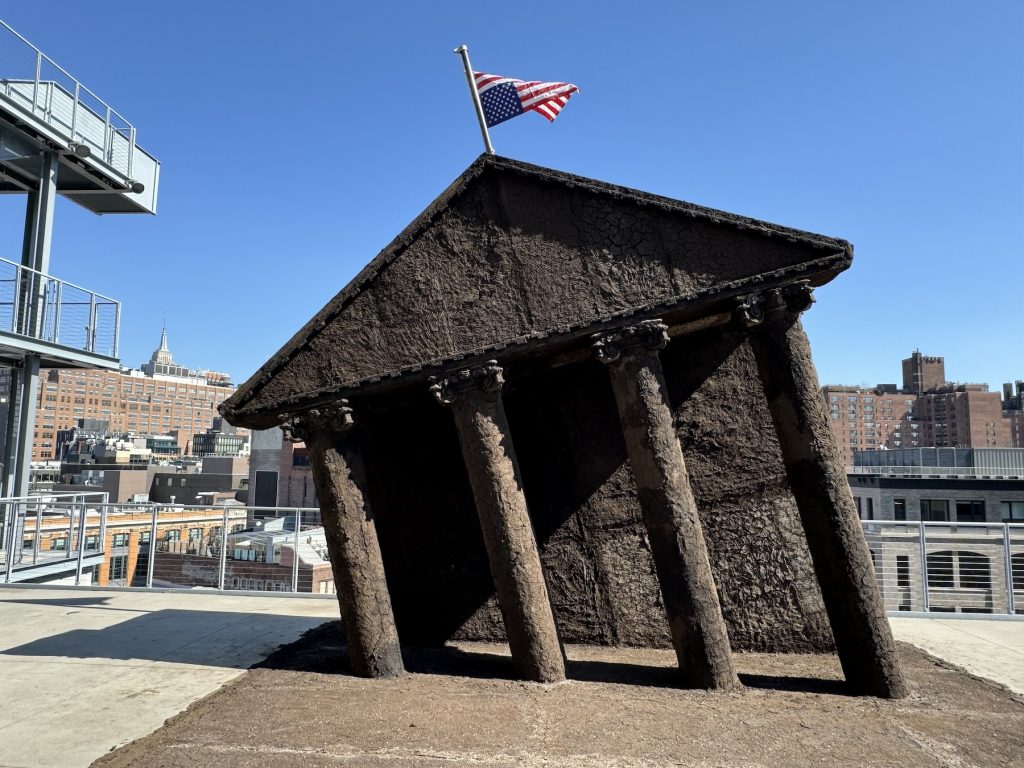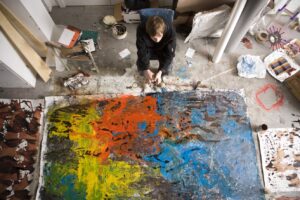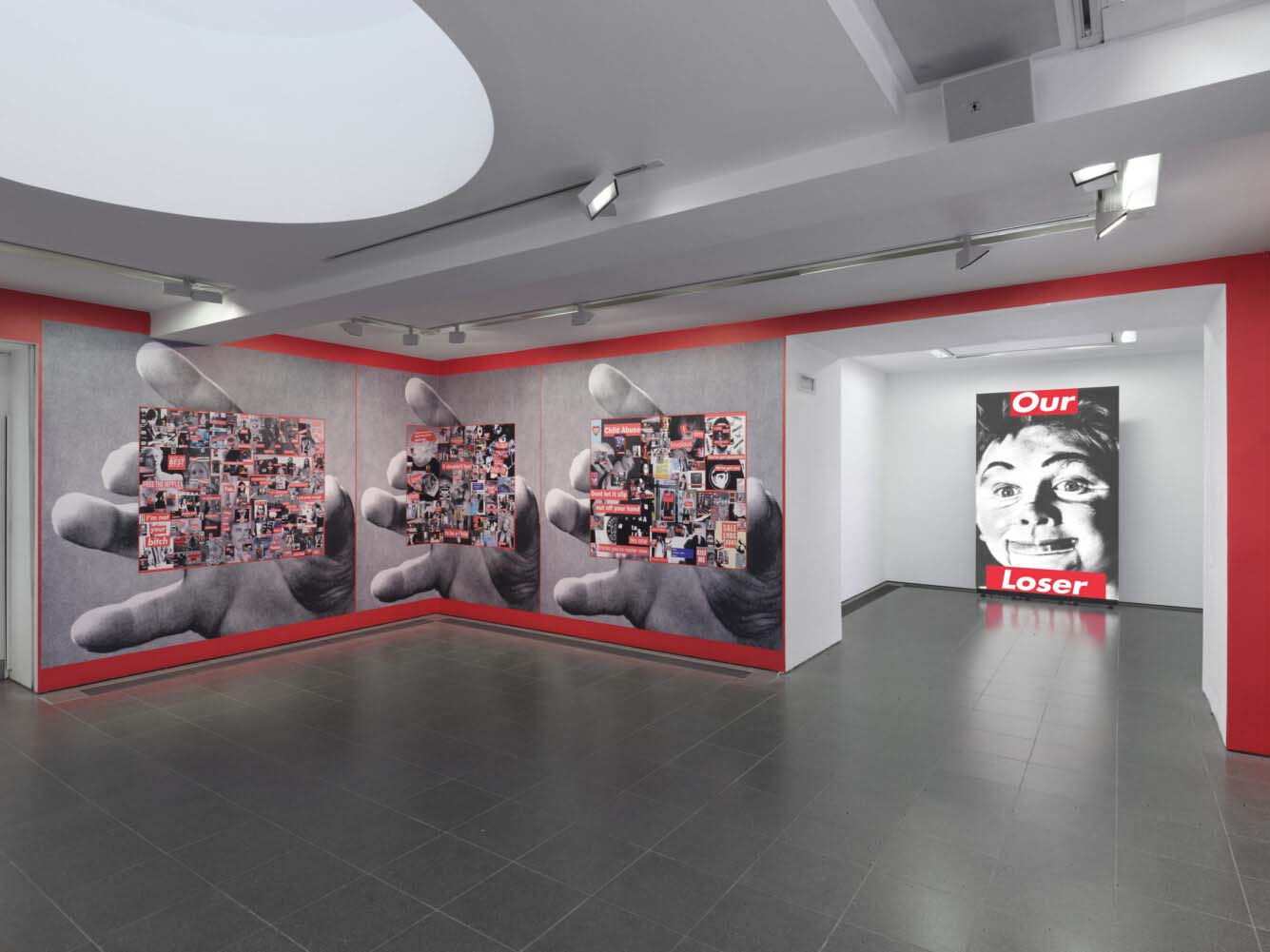Opening on March 20, the Whitney Biennial 2024: Even Better Than the Real Thing showcases the works of 71 artists and collectives, spanning various media and disciplines and embodying evolving notions of American art. As the 81st edition of the Museum’s esteemed exhibition series, this Biennial delves into many pertinent ideas of our time.
Structured thematically, the exhibition occupies most of the Museum’s gallery spaces and features a robust series of film and performance programs accessible both in-person and online. The 2024 Biennial centers on the concept of “the real,” exploring this theme through interconnected throughlines between artists, materials, and ideas. It acknowledges the critical juncture society finds itself in, particularly due to integrating machine learning models into daily life and media, including artificial intelligence. Additionally, the Biennial addresses society’s complex relationship with the body, identity fluidity, and the natural world’s fragility.
Co-organizers Chrissie Iles and Meg Onli commenced the Biennial’s development in 2022 by engaging with artists from across the nation and the globe. Through these interactions, artists reflected on their contemporary moment and how their creative practices intersect with broader societal dynamics.
In a world still grappling with the aftermath of the COVID-19 pandemic, artist Ligia Lewis, during the listening tour, expressed a desire to create a “dissonant chorus” of diverse ideas through her work and that of her peers, recognizing the fractured nature of our current time. A significant challenge identified by Lewis and echoed by many was the difficulty of bridging differences—whether in geography, identity, history, or lived experience. This theme resonated strongly with co-organizers Chrissie Iles and Meg Onli, aligning with the overarching framework of the Whitney Biennial.
The subtitle of this Biennial, “Even Better Than the Real Thing,” emerged from discussions between Iles, Onli, and the artists involved, challenging notions of reality and pushing back against rhetoric that perpetuates transphobia and limits body autonomy in the United States. Against a backdrop of sweeping legal changes, such as the overturning of Roe v. Wade and attacks on gender-affirming care, the exhibition title serves as a response, referencing a long history of marginalized groups being deemed less than “real.” Iles and Onli’s curatorial process, along with the artworks featured, are imbued with these unfolding histories and the varied techniques artists employ to confront them—whether through the use of unstable materials, subversive humor, expressive abstraction, or non-Western forms of cosmological thinking.
Artworks at the biennial
The 2024 Whitney Biennial examines rapidly advancing technologies and machine learning tools. Artists Holly Herndon and Mat Dryhurst present work that is part of a project focused on training the data behind AI models, with the hope that AI can be used in creative, even liberating ways.
Herndon and Dryhurst’s work will be presented in the galleries and via a text-to-image AI program on artport, the Whitney’s portal for Internet art and online gallery space for net art commissions. The body and subjectivity as it pertains to queer identity, body sovereignty, motherhood, the aging body, and the trans body is a critical throughline of the 2024 Whitney Biennial.
Carmen Winant’s work consists of 2,500 prints assembled to form a collective portrait of the ordinary, daily tasks required to provide abortion health care—a project that became much more urgent with the overturning of Roe v. Wade in 2022. In conceiving the work, Winant worked across the Midwest and the South with the archives of special collections, university hospitals, and predominantly clinics in order to collect photographs of staff, physicians, and volunteers taken over a 50-year period.
Mary Kelly will be presenting part of the final project of her career at the 2024 Biennial. The work titled Lacunae (2023), meaning blank spaces or missing parts, starts with the calendar. She uses this calendar as a framework to document her own aging and the passing of friends and loved ones and invites viewers to reflect on materiality as well as the body and its final passage or transformation. For Jes Fan, the body is a site of making. The four sculptures presented were created from 3D-printed CAT scans of the artist’s own body. In these sculptures, injury becomes an allegory of an interior state of being, suggesting that something precious might be generated by invisible wounds borne by queer bodies and bodies of color.
On the Museum’s third floor, artist Pippa Garner presents an installation that references the ubiquity of mass-produced consumer goods and the ways that the marketing and design of these goods imply human-like qualities, such as personality and gender. The “impossible inventions” presented in the gallery adopt an almost “mad scientist” approach to the oddity of anthropomorphizing manufactured goods, imagining fantastical second lives for objects that have become obsolete. Some of the works reflect on the artist’s transition—or genderhacking, as she refers to it—which she began at the end of the 1980s.











